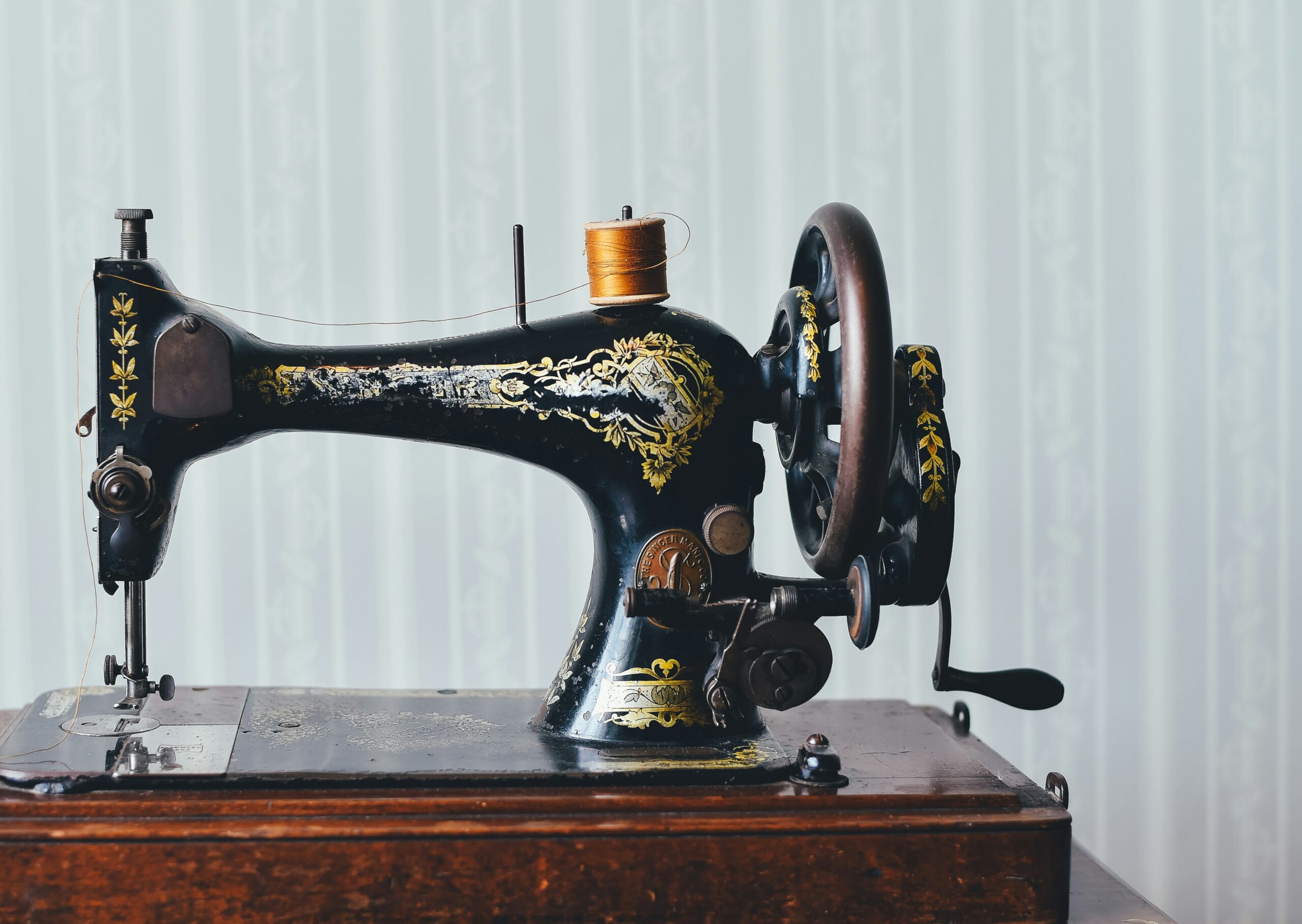Your cart is currently empty!

How do you know what type of sewing machine you have?

When I’m asked if I’m able to restore a sewing machine, the first question I want to ask is what type of sewing machine it is. Often, people want to restore a sewing machine that they’ve inherited from a family member, or found at an antique store. If they haven’t been sewing themselves, they may not know what they have. Let’s take a look at the basic types of sewing machines you might have:
Treadle Sewing Machines: Powered by Footwork

Treadle sewing machines are the oldest, widely used home sewing machines. Powered by a foot pedal connected to a belt and flywheel system, these machines require no electricity, just a steady rhythm and a bit of practice.
Key Features:
- Mechanically operated via foot treadle
- Typically housed in a wooden cabinet with cast iron legs
- Extremely durable and simple to maintain
- Popular from the mid-1800s through the early 1900s
Treadles hold a special place in many hearts for their quiet operation and elegant ironwork bases. They’re not just machines—they’re pieces of functional furniture and history.
They are also especially useful if you live in an area prone to power outages! Learn more about these wonderful machines at TreadleOn.
Hand Crank Sewing Machines: Portable and Personal
Hand crank machines are compact, often ornate, and designed for portability. Instead of using a foot pedal, you turn a side-mounted crank to drive the needle. The feature image for this post is a hand-crank sewing machine.
Key Features:
- Operated by hand (great for slow, precise stitching)
- Excellent for basic straight-stitch sewing
- Often used in classrooms or as travel machines
- Still favored today in regions with limited electricity
Many early 20th-century hand-crank machines were beautifully decorated with decals, gold leaf, and fine engraving. They’re perfect for collectors—or anyone who wants to feel every stitch.
Electric Sewing Machines: The Modern Standard
Electric sewing machines first appeared in the early 20th century and gained widespread popularity by the 1950s. A small motor does the hard work, leaving your hands free to guide fabric.




Key Features:
- Powered by electricity and operated with a foot pedal or knee lever (for some models before 1970)
- Faster and more versatile than manual types
- Wide range of models from mechanical to fully computerized
- Modern machines made from the 1970s to now can have multiple types of stitches to suit different purposes
- Ideal for both home and professional use
Electric models include mid-century metal classics like the Singer 301 and colorful plastic-bodied 1970s styles. This type of sewing machine has evolved into today’s high-tech, computerized machines—but many vintage electric models still stitch like champs.
Sergers: A Specialty Powerhouse

Sergers are a type of specialty sewing machine used to finish raw edges at the same time they stitch.
Key features:
- Uses at least three, often four or five, spools of threads at a time
- Multiple needles, with the remaining thread strands routed through arms called “loopers”
- Has a cutting knife that will remove seam allowance as the seam is stitched to create a finished edge
Antique vs. Vintage Sewing Machines: What’s the Difference?
These terms often get used interchangeably, but there are some general guidelines collectors and enthusiasts use:
- Antique Sewing Machines are typically 100 years old or more. This includes most treadle and early hand-crank machines. Think: pre-1925.
- Vintage Sewing Machines usually refer to machines made between the 1920s and 1970s. Many are electric, built with all-metal parts, and often painted in bold colors or pastels.
Antique machines are prized for their craftsmanship and historical value. Vintage machines, on the other hand, are often sought after for their reliability and practical use today—they bridge the gap between old-world beauty and modern utility.
Researching Your Sewing Machine
The International Sewing Machine Collectors’ Society is an organization that has curated an amazing wealth of information and reference materials about sewing machines of all ages. Check out their research section to get started researching your sewing machine by manufacturer and serial number. The manufacturer name is usually printed on the machine in a prominent place, and the serial number will usually be on a small badge on the outside or stamped on the underside of the sewing machine.
There are a number of Facebook groups devoted to vintage and antique sewing machines that also have a variety of resources and references for identifying and dating sewing machines.
Why The Type of Sewing Machine Matters
Understanding the different types of sewing machines helps you choose the right tool for your craft or your collection, and get the right services to keep it stitching. Whether you’d like to restore a hand-crank beauty, a sleek 1960s machine, or simply admire the treadle in your grandmother’s home, we can help get the machine stitching again and the cabinet looking great.
